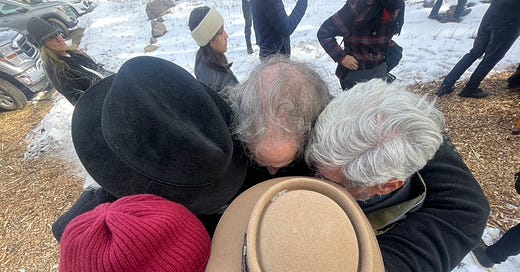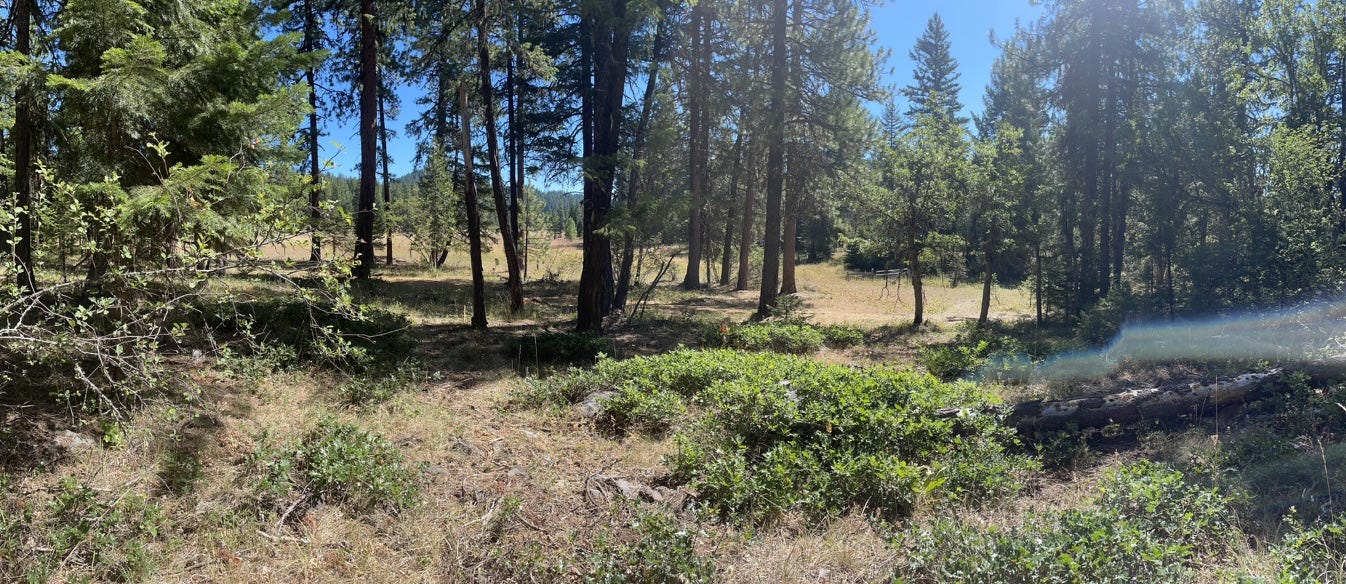No doubt, if you have been reading “On the Shelf,” you have surmised that the storage room, and the jar in which I live, are metaphors for my body and mind. The shelf is my somewhat limited experiential vantage point, a space for reflection and discovery.
Of the curiosities that line these shelves, the ones that draw me in most are the various containers. There are jars, filled and empty. The filled ones hold all types of material—some contain foodstuffs like jam, pickles, grains, nuts, and seeds, while others display utilitarian items like nails and tacks. In my lifetime, my interior has been filled with a gracious plenty, although at the moment it is empty, save for the rambling thoughts that bounce off my walls of glass.
The opaque containers, which hide their contents from plain view, are the most intriguing. Some of these hold the remains of bodies—cremated cats and dogs mostly, but there are a couple with the corporeal residue of dead people too, who, for reasons known only to the family, have been kept on the shelf, confined for eternity in decorative urns. I pity those containers whose singular job is to hold ashes.
That reminds me of a story.
About a year and a half ago, my mother, who was ninety-six at the time, had just decided that she was finished with going to the doctor. They had been hounding her to come in to get bloodwork done.
“Really, what is the point?” she said. “Does it really matter if my cholesterol is high?”
A wave of grief, guilt, and relief washed over me. I didn’t disagree. Finally, she was acquiescing to the will of her body to die, and it was her decision, not mine. For some time, she had been voluntarily bed bound. She no longer dined with us or went anyplace—not even to the bathroom. With difficulty, I could transfer her to a wheelchair, but it hurt her. Sitting in the wheelchair and the car did too.
She said, “I just don’t understand why the doctor can’t come visit me here.”
She wanted medical care—she didn’t want to go through suffering to get it.
I’d asked for home visits on several occasions, but Kaiser said she would only qualify for them if she were recuperating from an acute incident, like surgery or a fall, and then only for a few weeks of support. The only other way for her to get in-home medical care was if she were on hospice. As long as she had me to bring her and didn’t meet the criteria for hospice, she wouldn’t qualify.
“Why doesn’t she qualify for hospice?” I’d asked.
“Well, because there isn’t anything wrong with her that will kill her in the next six months,” the doctor said. “She could live another ten years.”
When I told her this, she said, “Can’t you just get me some fentanyl or something? I thought this was a ‘right to die’ state.”
“Yeah, unfortunately, it isn’t that easy.”
A few weeks went by. The phone rang. It was a Kaiser nurse. They wanted me to bring Megan in for her well check.
I said, “Well, she refuses to come in. Honestly, I’m at my wit’s end. I really could use some help. She needs medical care, but I can’t get it anywhere. I even tried to sign up for one of those Doctor on Call services and was rejected.”
“Oh dear,” she said, “Sounds to me like it might be time for hospice.”
“Yeah, it has been time for two months,” I said, my anger over the situation bleeding through the phone line.
“Let me see what I can do,” she said. She set up a video visit with my mother’s primary care physician. Not an hour later, my mother was officially on hospice. Two hours later, a hospice nurse showed up at the house to do her intake. I cried. We were no longer alone.
Going on hospice was a turning point for my mother. Suddenly, the end was in sight. It was positive but also frightening for her as she began to contemplate the reality of dying.
One day, out of the blue, she said, “I’ve decided that I don’t want to be cremated after all.”
“What do you want to do instead?”
“I don’t know. I want to do something to honor my vessel.” She said the word “vessel,” as she gestured from head to toe with both hands, tracing the shape of her body.
I sat silent for a moment, shocked by the clarity of that statement. She saw the puzzled expression on my face.
“Burning up this wonderful vessel that has done so much for me and given me so many incredible experiences, including birthing all six of my babies, just doesn’t seem right.”
I couldn’t disagree. And so, we began discussing how she might honor the container of her life.
“I just want to become part of nature. Can’t you just stick me in the ground?”
We investigated a number of green mortuary practices, including water cremation and human composting, but those ideas were repugnant to other family members.
My mother said, “Just do what is simplest. Just stick me in the ground.”
I didn’t tell her then that being cremated the old-fashioned way is really the simplest thing. Instead, I suggested a shroud burial. Definitely not the simplest, or even the smallest carbon footprint, but it suited her. Moreover, it honored the vessel.
Her body was interred a year ago on December 15th in a natural burial ground called The Forest, outside of Ashland, Oregon. It lies beneath a carpet that alternates seasonally between snow and wildflowers. She nourishes the surrounding earth with her body as she once nourished her children.
My thoughts return to the shelf and the wonderment of all that it contains—the containers and the contained. In my own way, I honor my vessel.





